Restoration
August 12, 2002
If a parrot lived at the Cherokee sight, he’d be able to say “sand it again”, “one more coat”, and “git, Casey!” The pilot house is looking spiffy, with a completed electrical cabinet and adjacent cooler. The breaker panel on the electrical cabinet swings out for easy wire access. Steve Gilpin is not only a first rate electrician on such projects, he is also plying us with his home-grown garden tomatoes and banana trees.

Electrical Panel and Built-In Cooler
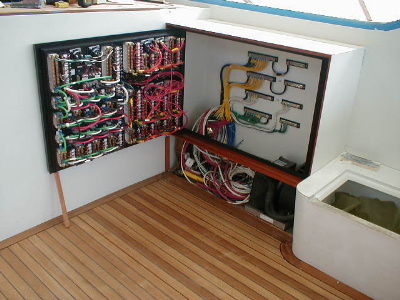
Swinging Electrical Panel
The crew has begun cutting and laying out the teak decking. The decking visible above has been glued down, while the aft decking (shown below left) is fitted and prepared for gluing.
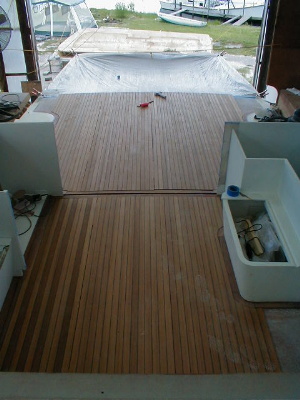
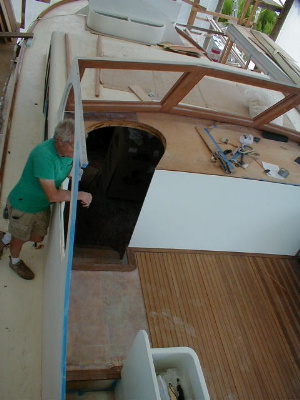
Decking In Progress
Interior doors are being sanded, varnished, and hung. Below, Tom is letting in the locksets for the pocket doors. The doors are then taped so the inside panels can be painted white and the outside portion can be varnished. The first doors have been hung in the master stateroom and guest room.
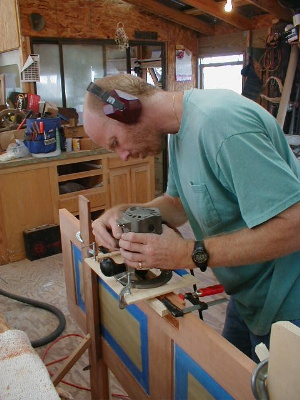
Tom Parker Straight and True with a Door
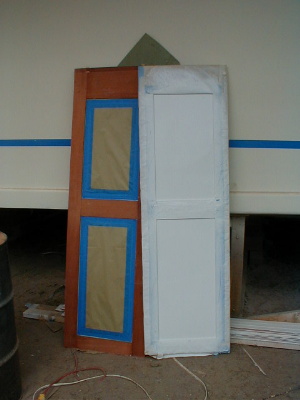
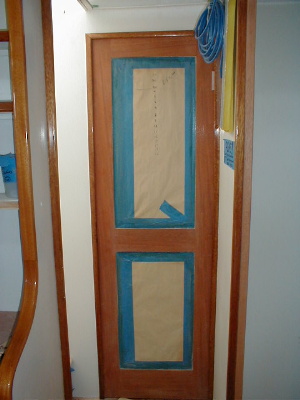
Doors Taped, Varnished, and Hung
Jeanette has been working tirelessly on the cabinet doors and paneling. Below she is holding a door panel up for all the world to admire, with many more lined up beneath.
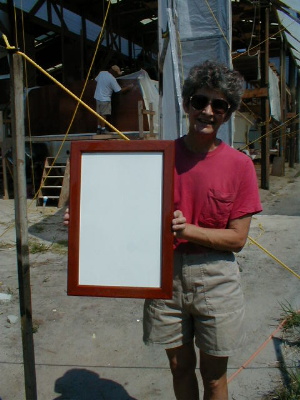
Jeanette with Cabinet Door Panel
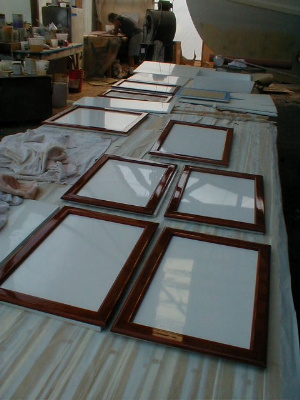
Panels, Panels Everywhere…
Tom has begun installing the sprinkler system. Below left is the supply from the boat’s domestic water. The red rectangular box is a flow alarm that will alert anytime the sprinkler system is flowing water. To the right, Tom brings up one of the legs of the Blazemaster CPVC pipe that will supply the aft part of the boat and the galley. In the lower left-hand corner of the bottom picture is the round white plate for the concealed pendant sprinklers, next to an exposed sprinkler head.
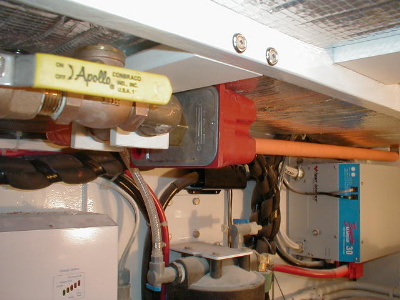

Sprinkler Installation
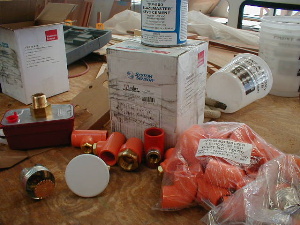
Fire Suppression Sprinker System Parts
A porpoise fishery was based in Hatteras Village until the mid 1920s. It consisted of a processing factory and eighteen fishermen who worked in camps up and down the beach. The late Damon Gray, one of the last of the crew, described the operation in two 1970s interviews. A lookout man would signal the crew with a branch if a “waif” (a large school of porpoises) was approaching. Four lap-straked dories worked the haul – two ran a light net out to stop the porpoises, and two ran a heavier seine within that, pursing the school and hauling them in toward the beach. The porpoises were hooked one by one “through the blowhole”, recollected Gray, and pulled ashore. If it was getting dark, the porpoises were left beached until morning. They were then stabbed in the heart, skinned, and carted to the processing factory where jaw fat was tried into oil for use in watches and fine machinery, selling for about $1,000 a barrel. Blubber was rendered, and the skin was removed and sold for use as industrial belts. The carcass was sold as guano. “They would use everything but the teeth,” Gray said matter-of-factly, reflecting a time when marine mammals were thought of as just another fish instead of our underwater soul mates. “They just left them right on the beach”. Signing off for now, Barbara “Fish Doctor” Blake












